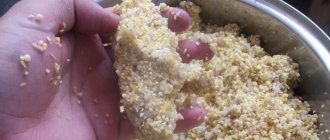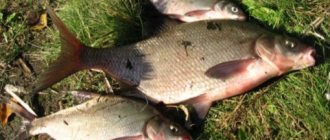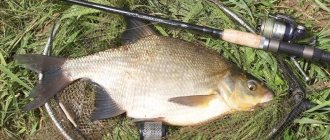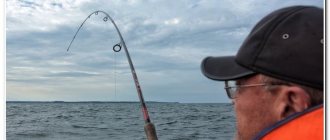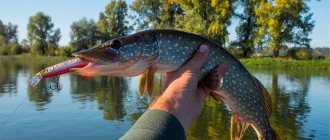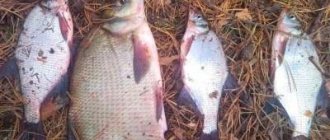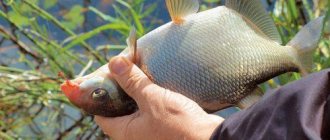Autumn bream fishing is a desirable and productive time for most bream fishermen, because this season is famous for trophy specimens and excellent bite. The summer scattering of fish in the fall turns into the gathering of huge schools, which, with proper searching, can be kept in a privileged place, ultimately resulting in a large catch.
The variety of fishing methods at this time will delight both floaters and bottom fishers, allowing them to fully experiment with rigs and all kinds of equipment options. And the use of baits of various types and directions can only help improve results. The angler will learn how to combine all these factors into a practical component and realize the potential of trophy fishing presented by the season by reading the information that immerses the reader in the specifics of catching bream in the fall.
A description of promising fishing spots, the necessary main and auxiliary equipment, as well as the secrets of fish-attracting compositions will help you competently prepare for seasonally promising trips for trophy bream.
Peculiarities of bream behavior in autumn
In September, bream does not differ in its behavior from the summer time, when it alone obtains food in shallow waters, at the same time basking in still warm waters and collecting protein-rich animal food in the form of all kinds of shells, mayflies and insect larvae, not shying away from eating small growths of underwater vegetation.

Important! The cold season with the arrival of October radically changes the habits of bream, forcing the fish to gather in huge schools and move on to search for food, which is beginning to become scarce, in a collective manner, intensively migrating throughout the reservoir.
Increased competition within the school for food resources and the upcoming wintering, which forces them to store energy, drives the fish into a feeding frenzy that will last until freeze-up. And as you know, zhor is the golden time of fishing for an angler, giving not only expectations, but also real significant results.
The final point of the migration routes of bream schools runs to deep wintering pits, in which the fish will stop until spring. Having determined the trajectories of movement of the schools, the angler will be able to get a stable bite over the course of two autumn months.
Weather dependent
Bream, like all other fish, are subject to dependence on weather changes and certain of its phenomena that affect the condition of the reservoir. Catching bream in the fall is highly dependent on a drop in pressure, forcing it to stop its high feeding activity for an indefinite period. Morning frosts do not promise a good bite, as a result of which sludge appears on reservoirs.
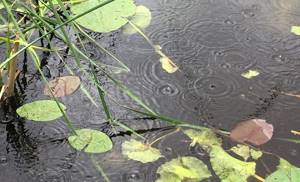
Prolonged and intense rains lead to an increase in water levels in rivers and lakes, which washes away coastal soil accumulations, increasing the turbidity of the waters and thereby stopping the bream biting until the suspensions are completely settled. Strong storm winds, which raise high waves and thereby mix cold surface waters with its warmer horizons, negatively affect the activity of fish. When adapting to a new temperature, the fish will also stop feeding, and at such moments it becomes cautious and rather picky.
Important! Bream like stabilization of atmospheric pressure at 740–750 atmospheres with partly cloudy skies and moderate wind.
Under such conditions, the fish remains active even after sunset, continuing to feed at night.
Fishing depending on month
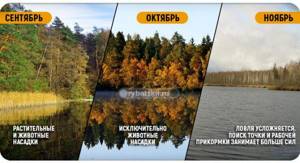
Fishing for bream in the fall can be different and a lot depends on the region and weather conditions in this region in a particular month. Somewhere in September there may still be warm, almost summer weather and then fishing will be easier, but in late autumn it will be real hard fishing with a lot of experiments.
September
In September, if the weather stays closer to summer, then the fishing strategy is not much different. You can feed more, and when fishing, try to use not only baits of animal origin, but also plant baits, such as corn, for example.
Read more about the nuances of catching bream in September on a feeder.
October
In October, as the weather gets colder, the preferences of bream are already beginning to shift in favor of protein, and here you can no longer take vegetable baits with you. Finding bream in October is already more difficult, and where it was in September it may no longer be there. We need to be more active in searching for fish.
In October, it is already harder to catch a trophy during the day, and fishermen effectively make night trips, when there is a greater chance of catching a large bream during this period.
November
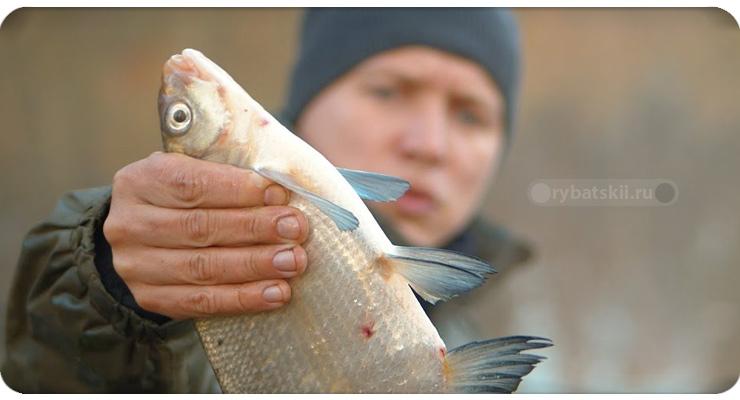
In November, real hard fishing begins, when maximum attention is paid to finding a fishing spot, as well as preparing bait and selecting bait. Try combining different mixes of bait, and also pay attention to adding an animal component to the food, while doing it in small portions.
In late autumn, catching bream is more difficult and more experience is required, and sometimes experience does not help. However, this is possible, and the main thing here is not to give up, but to try a wide variety of options, from changing equipment elements to combining nozzles. And then your chances of success will increase significantly.
Best fishing time
During the warm period of autumn, bream continue to follow their daily routine according to the summer schedule, starting to go to the shallows at early dawn and continuing to bite from dawn until 9–10 o’clock in the morning. Subsequently, the bite stops and can occur periodically only with the arrival of twilight. During the day, it is useless to expect bream bites; the fish stay in nearby holes and do not show any activity.
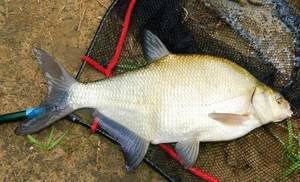
With the beginning of flock migration, the summer regime completely changes. Now the bream feeds after sunrise and before noon. From noon to night, bites are rare and the catches will only contain small specimens, but as night falls, the bite increases and catching a trophy bream in late autumn under a starry sky and a full moon becomes quite common.
Important! As a rule, night bites last up to 3–4 hours, after which a period of no-biting begins again until dawn.
This principle of fishing is relevant until the freeze-up, at which point the fish stop falling into holes and underwater ditches.
Where to look for bream in autumn
The arrival of calendar autumn does not affect the habitats of bream. During the day they stay alone, near the bottom in snags and holes located near feeding areas, emerging in the early morning on the shallows to the coastlines or spits on shell rocks.
The water areas where the fish feed usually do not exceed depths of 2–4 meters, having a hard clay bottom on shell rocks, and on grass banks bottom bases with a thin layer of silt in which the fish digs to find suitable food, which is visually noticeable to the fisherman by rising to the surface a number of air bubbles. Currents in the feeding areas of bream are minimal and do not differ in eddies and rapids.
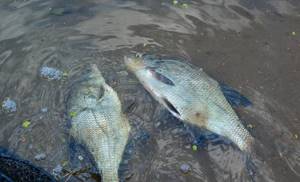
Important! With the beginning of migration, bream are searched for in riverbed holes. When schools move, they linger on bottom anomalies, where it is possible to fish on dumps and steps of steep underwater walls, choosing places on the riverbed with slower currents.
On lakes, they focus on deep-water areas, fishing for smooth exits to shallow plateaus located at a distance from the coastlines. The fish stops at the very bottom, and when the school moves, it tries to stay in the middle or near-bottom water horizon. Large specimens can be found both at depths of up to 20 meters and also come out on shallows of 3–4 meters. The composition of the bream school is not dimensional stable; the school simultaneously contains both large and small fish, often alternating with silver bream. It is also commonplace to see pike perch near a school, as fishermen say, grazing schools of bream.
Necessary gear
Due to the fact that during the cold season bream stops coming close to the shore and generally does not behave very actively, the best option for the average fisherman would be a feeder. The rod must be at least 3.9 meters long in order to be able to cast as far as possible.
An inertia-free reel must be taken with a well-tuned friction brake. A braided line with a diameter of 0.14 is suitable, the main thing is that it allows you to make long casts with minimal risk of rubbing against underwater obstacles and at the same time makes it possible to track all bites.

Hooks are selected according to the size of the fish's mouth. They should fit in there freely, usually numbers 9 to 14 are suitable, depending on the size of the fish.
Among the float tackles, we can mention the Bolognese fishing rod and matcha. Equipment with flat floats performs well. Their design ensures high stability even in strong currents.
In addition to gear for direct fishing, you need gear to hold the bream in place, that is, feeders. Since the flock strives to leave at the first danger, it is best to use fine ground bait.
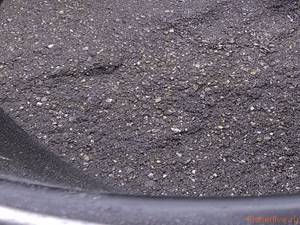
It will allow you to keep the bream in one place for a long time, not allowing the fish to get enough. In this case, it is best to take several devices for bait at once in order to feed in several places at a distance of 50-70 meters from each other, so the chances of finding a bream biting place increase.
In addition to the above, gear for finding a place may be useful. A good option when fishing from the shore is a portable echo sounder or marker float.
Bait for bream in autumn
Autumn bait for bream remains relevant, despite the high activity of the prey. Its use stimulates the fish to approach the fishing point, and also keeps the school near the supplied bait. In September, the compositions of bait mixtures are identical to summer complementary feeding options. For the most part, they are prepared in thick consistencies. After all, knowing the exact places where bream emerge, the spread of the turbidity plume is not as important as when fishing in later autumn periods on currents.

Bait for bream on the feeder is made without thinners, soil or clay. If the bait composition is prepared for bait for other types of fishing, then the mixes also include non-feed components in the ratio of 1 part feed to 3 parts diluent. Bream react quite well to odors, which allows them to actively use all kinds of attractants for attraction. As the water temperature drops below 10 degrees, the amount of flavoring is reduced, making the mixtures less odorous.
Feed mixtures must contain an animal component and preferably the type that will be used as the main bait. As an example, here are several recipes for do-it-yourself mixed feed mixtures for bream made from accessible and inexpensive ingredients.
Recipe 1
- We make the composition based on breadcrumbs -500 g.
- Add crushed sunflower seed - 200 g.
- Add crushed oatmeal - 200 g.
- Add ground hemp seeds - 100g.
- After thorough mixing, the mix includes an animal component from small food bloodworms, 20–25 grams of larvae per kilogram of the mixed mixture, and dried beef blood in a volume of 50–70 g, which will create a dusting effect.
- The attractant to choose from in the presented recipe can be coriander, cocoa or vanillin.
- The amount of flavoring for cold water is 10 grams per 1 kilogram of mixture, for warm waters it is about 30 g.
Recipe 2
- We prepare a composition based on boiled and strained millet porridge or pearl barley - 300 g.
- Add ground corn or peas - 150 g.
- Add sunflower seeds - 150 g, roasted and ground in a mixer.
- Add oat bran or crushed white bread crackers - 150 g.
- Add finely ground raw semolina -150 g.
- At the end of preparation, the composition is filled with powdered milk to create a dusty plume in the amount of 100 g.
- Animal component in the form of chopped dung or earthworm and maggot. Per kilogram of mixture add 100 grams of animal protein.
- The attractant can be molasses in a volume of 50–70 grams, instant coffee 20 grams or cinnamon in a volume of 60 grams per kilogram of the composition.
Groundbait and preferred baits: general rules
In the autumn months, residents of reservoirs begin to prepare for winter. At this time, bream need as much protein as possible to survive the long winter under the ice. If in September the fish prefers to remain on a summer diet, then as cold weather sets in, it is necessary to increase the amount of protein in the menu.
It is worth including some peas in the bait at the beginning of autumn. It is boiled and passed through a blender. Be sure to mix peas with breadcrumbs, adding pieces of maggots and worms. You can replace the peas with canned corn. Boiled pearl barley or millet groats are also added to the bait. But a diet without animal protein will be useless.
Important! For 5 kilograms of bait you will need 100 grams of maggots or bloodworms. From the baits you need to choose those that are of animal origin. Worms, bloodworms, and maggots are best suited.
The ratio of the protein component increases as the water and air temperatures decrease. The main thing in feeder fishing is not to overfeed the bream. Therefore, it is necessary to wisely fill the feeders with nutrient mixtures. The pleasant aroma will attract fish, and the catch will be significant.
But there are a number of rules for attracting:
- Add maggots to feeders more often as fish activity decreases.
- From the end of October, the worm should be replaced with bloodworms.
- Food should be flavored sparingly.
- For aromatization, alcohol liquids with aromas of anise, pepper, lemon balm, anise, and coriander should be used.
- At water temperatures below 10-12 degrees, baits and bait made from plant components will not interest bream.
An attentive fisherman will experiment with baits, monitoring the behavior of the fish and its activity. Even animal food should be changed, starting with maggots, dung worms and switching completely to bloodworms until freeze-up. Mixtures for feeder fishing are purchased in specialized stores. But many people prefer to make their own bait.
Homemade bait recipe No. 1
The proportions of the prepared mixture should be observed so that the bream’s nutrition is high-calorie and balanced. Then the bite will be active. You need to calculate the components using small measuring cups. The mixture is based on special fish food. It will be sufficient in the amount of 2-dimensional units. Mixed with it:
- the same amount of roasted hemp seeds and breadcrumbs (3 m.u.);
- 1 part each of dry clay, egg powder;
- 3 parts crushed maggot;
- 2 pinches of dried dill.
Dry ingredients are steamed. The crushed mass of worms or maggots should be placed at the last moment after filling the feeder. Rusks are needed in bait to hold the nutritional mass together. The clay makes the feeder heavy, helping it sink to the bottom. During the current, fertilizer with clay is less washed away. In calm water, replace the clay in the nutrient mixture with sand. At the beginning of autumn, you can add some potato chips, after crushing them. They add flavor to the bait and contain a lot of calories.
DIY recipe No. 2
The nutritional mixture can be made by adding to it:
- hemp or flax bran;
- corn sticks, finely chopped;
- sunflower cake;
- bloodworm;
- maggot;
- dry clay.
Most of the complementary feeding is taken up by bloodworms (5 parts), maggots are taken a little less (3 parts). The plant component - cake occupies 3 parts, and bran - 2. The remaining ingredients - 1 part each. It’s worth adding a little dried mayfly and Zdorovye coffee powder. The main thing is that all the ingredients are crushed and moistened. Bloodworms and maggots are added in portions.
What flavors and dips work best?
You can attract bream to the feeder with aromas. In autumn they should not be sickly sweet as in summer. The smell of a worm and bloodworm works. The aroma of anise, cloves, cinnamon, and thyme will be attractive to the inhabitants of rivers and lakes. Don't add too much odorous liquid. Too much scent will only scare you away.
Supplementary feeding during fishing
Bream loves bait, regardless of the time of year, and leaves the meager table without a food highlight, which must be chosen correctly, experimenting with flavorings during the fishing process. Having selected the necessary components, you should be careful not to over-saturate the fish, providing only portioned supplementary feeding, which forces individuals to compete with each other as a result of its selection.
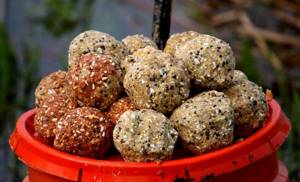
Important! Supplementary feeding should contain small, but rich in animal portions, which will be fed precisely to the fishing point, preventing the expansion of the feeding spot.
When fishing with a float or plug rod, it is convenient to supplement feeding by feeding the bait with a feeding mug using a sliding telescopic pole. When fishing from boats in the current, additional feeding doses are supplied to the fishing points, taking into account the displacement due to the force of the stream.
What do you use to catch bream in the fall?
In the autumn, bream baits are used of purely animal origin. As in the summer, the classic bait is a bunch of dung worm, which is stuck on the hook in the center of the body, allowing both tips to wriggle, which is very attractive to bream. Using a panicle of a large bloodworm and a bait formed from three to five maggots almost never remains without the interest of the fish. During periods of uncertain bites, they switch to combinations of these baits, using worms and maggots, maggots and bloodworms in a mix. Some regions are characterized by lard fishing. The meat of pearl barley and toothless fish works effectively in reservoirs where these mollusks are part of the natural diet of bream schools.
The best commercial baits for bream
Increasingly, fishermen prefer store-bought bait, which is justified by many. This is much easier than spending hours on your own cooking cereals, selecting flavors and additives. In addition, they are conveniently packaged and practical to use.
But the question of which bait should be preferred still remains open. Therefore, we will look at the best commercial baits on the ready-mixed market for bream fishing.
Fish Dream Club Bream+
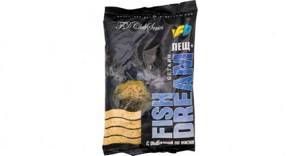
Fish Dream Club bait Bream+ is one of the best-selling baits. This is due to its excellent composition and real effectiveness. It is rich in protein, has a vanilla and coconut aroma, and also includes a lot of ground hemp grains. In addition, the mixture itself is coarsely ground and bright in color, which certainly attracts the attention of the fish. Thanks to the balanced composition, each fisherman can personally change it by adding flavors and other attractants, if he considers it necessary, without compromising the quality of the bait.
Marcel Van Den Eynde Feeder Bream
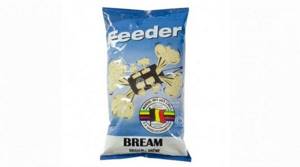
The Marcel Van Den Eynde Feeder Bream bait can be either self-sufficient or the basis for creating your own. The manufacturer himself says that for greater effectiveness when fishing for carp, you should add some worms, bloodworms or larvae. This will make the mixture seem more attractive to the fish, which will increase the bite significantly. This bait was created specifically for deep-sea fishing, so you shouldn’t expect much from it on the shore. To achieve the desired consistency for successful fishing, you need to pay attention to the water - if it is calm, then the food should be left barely wet, and when the current flows, make it wetter.
Traper Gold Series Champion

Traper Gold Series Champion food is also an excellent stand-alone bait, but for catching bream it is a base that requires various kinds of additives. It copes well in strong currents, despite the fine grind. Strawberry, garlic and pea flavors are great as additives. The colors of the bait are few: only red and brown. A huge advantage is the fact that Traper Champion was developed by experienced fishermen who know their business inside and out and have many awards in international competitions.
Traper Giant River Super Bream
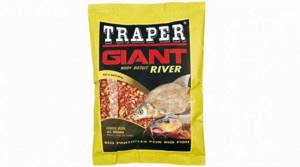
Traper Giant River Super Bream bait was created by the same manufacturer as the previous one. It can also serve as an excellent base if the composition seems unfinished to you. However, the mixture itself is already one of the most effective for catching bream among all those available on the fishing market. Its composition is balanced, it contains everything that this type of fish loves so much: corn, biscuit, nuts. In addition, during production, flavors, dyes and other attractants were added, allowing for incredible results, and coarse grinding ensures a greater catch.
{banner_vnutri-kontenta-3}
G. Stream TOP Series Bream

The peculiarity of the manufacturer of the G. Stream TOP Series food and its entire range as a whole is that the mixture itself is based on natural confectionery ingredients that are so loved by bream. Due to the bright aroma, the bait brings a larger catch in the summer. The grind of the food varies from fine to medium, providing a bright bite and fish of different sizes.
How to catch bream in the fall and what gear to use
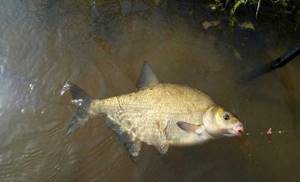
With the arrival of autumn, catching bream from the shore becomes problematic, which is associated with its movement from the banks to deeper places in rivers and lakes. Catching large bream in the fall with a feeder and float tackle can only be carried out in September until the temperature drops significantly compared to summer. For the rest of the period, you will have to fish using a boat in the distant waters of the reservoir, looking for routes for the passage of schools of bream.
Important! The flotation device is used from PVC material, excluding the use of metal boats, which repel fish from the impact of waves against their sides.
From boats they fish with onboard gear using a float and various bottom equipment. Fishing for bream using a ring is effective. In this ancient, but still catchy technology, a special role is given to the use of bait, in the installation area of which the bait is quite accurately supplied, which incredibly increases the likelihood of bites.
One of the practical tackles for onboard bottom fishing is the zakidushka. The equipment of this type of donkey is mounted on a shortened fishing rod or winter spinning rod. Nods are used as bite alarms, which are illuminated and caught at night.
Selection of gear for autumn fishing
The choice of gear for any fishing depends on the time of year and the area where the fishing takes place.
The following types of rods are suitable for autumn bream fishing:
- feeder;
- donka;
- float rod.
For each fishing rod you need to select the appropriate equipment. In addition, it is important to choose the appropriate fishing technique. The following tips will help you do this correctly.
Also read how to fish for carp in the fall.
Feeder
As cold weather approaches, bream goes deeper, so for autumn fishing you can use a feeder, a type of bottom tackle. The feeder is great for long casts and long distance fishing.
It is recommended to assemble a feeder for autumn fishing from the following components:
- rod _ It is desirable that its length be 3.9 m;
- reel _ Inertia-free, with a friction brake on the spool;
- fishing line The preferred length is 100 mm and the diameter is 0.25 mm;
- hook №7, №8, №9.
As equipment you can use a paternoster, as well as a helicopter and two knots.
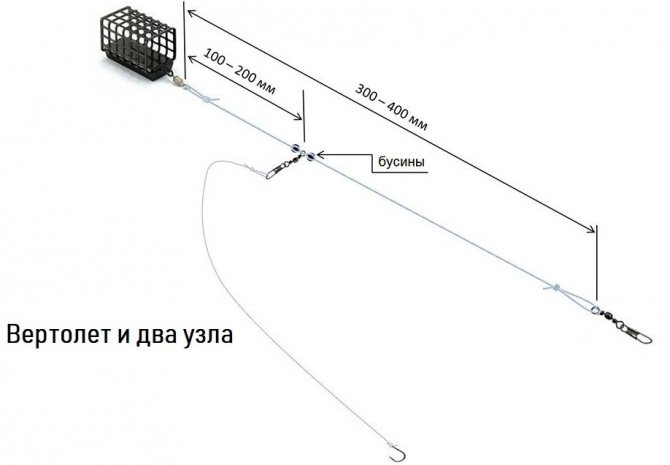
Donka
One of the most catchy bottom gear is the “ring”. A ring, or side, donka is a tackle used for boat fishing. Allows you to reach the bottom using a heavy feeder that can weigh up to 2 kg. It consists of a side rod and a strong main line to which the equipment is attached. The equipment, in turn, is one piece with the feeder.
We also suggest learning how to catch chub using bottom and feeder gear.
In this case, hooks and leashes are attached behind it and are in the flow of the current. Since mainly large fish are caught from the bottom, you need to choose appropriate hooks. For this type of tackle, hooks No. 12 and No. 14 are suitable. The tackle is effective for fishing at great depths with strong currents. Such a fishing rod is not used from the shore or in the shallows, as it is considered rather clumsy.
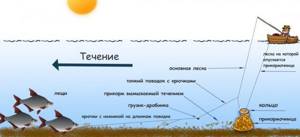
Float rod
A float rod is considered effective for autumn fishing on a small river. To catch bream, it is better to choose a fly rod with a length of 6 m. It can be equipped with a monochrome fishing line. It should be thin and durable at the same time. The preferred line section is 0.2 mm. The reel must be selected taking into account the length of the fishing line and rod. It is desirable that it be equipped with a friction brake. This will help curb vibration when biting.
Read how to catch carp with a float rod.
Rules for choosing equipment:
- The float should be oblong, with an elongated antenna. Weight-lifting floats are suitable for autumn fishing. The weight should correspond to the length of the line and the distance over which the cast is made. For short distances, for example from a boat or shore, floats weighing up to 2 g are suitable. For long-distance casting, it is better to choose a heavier float - about 10 g.
- It is better to make a leash from monofilament fishing line. Its diameter should be 0.12–0.14 mm.
- The hooks should be thin and sharp enough so that they can easily be attached to a delicate bait, such as a bloodworm. Hooks No. 8, No. 9 are suitable for a float fishing rod.


